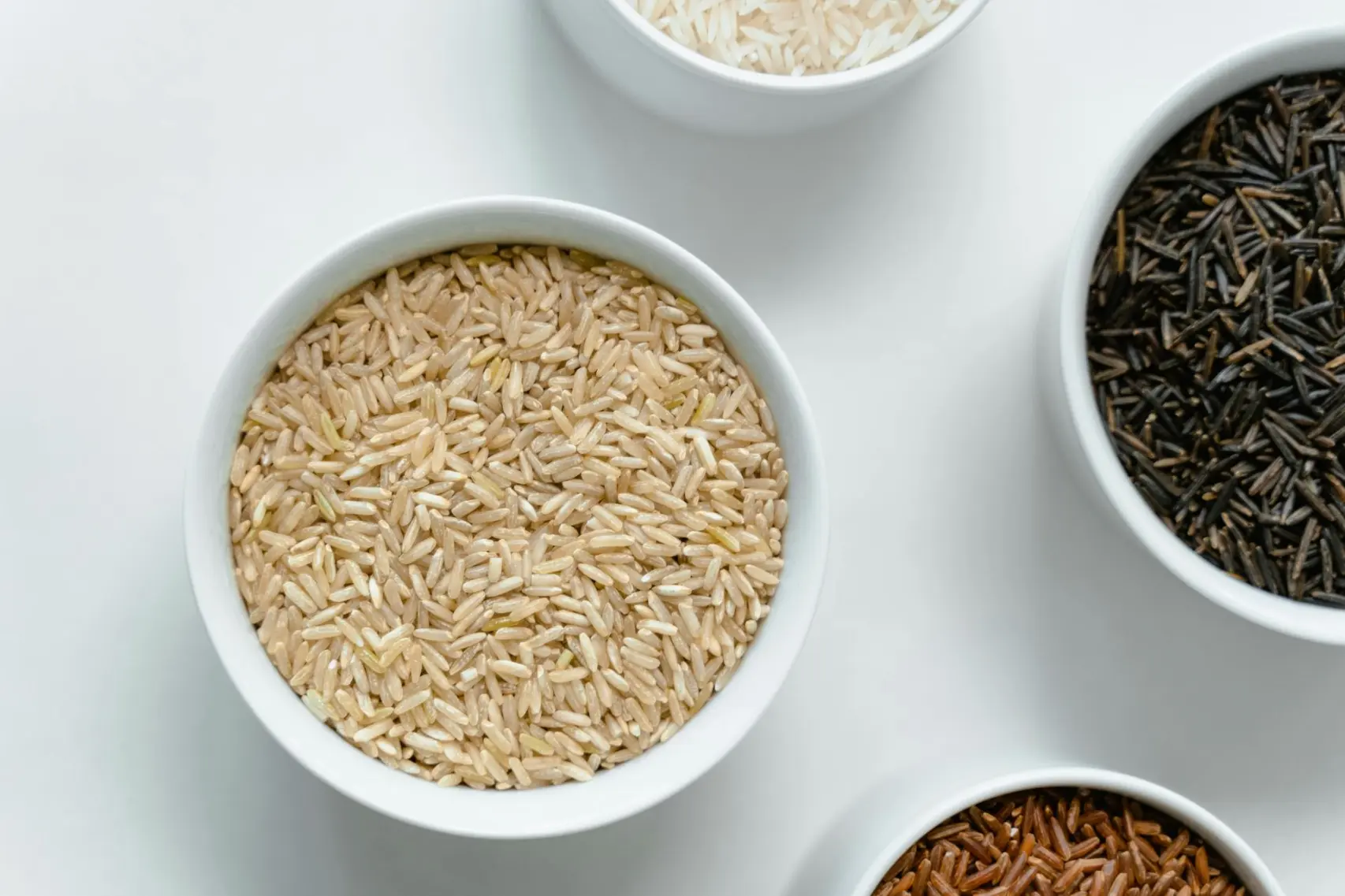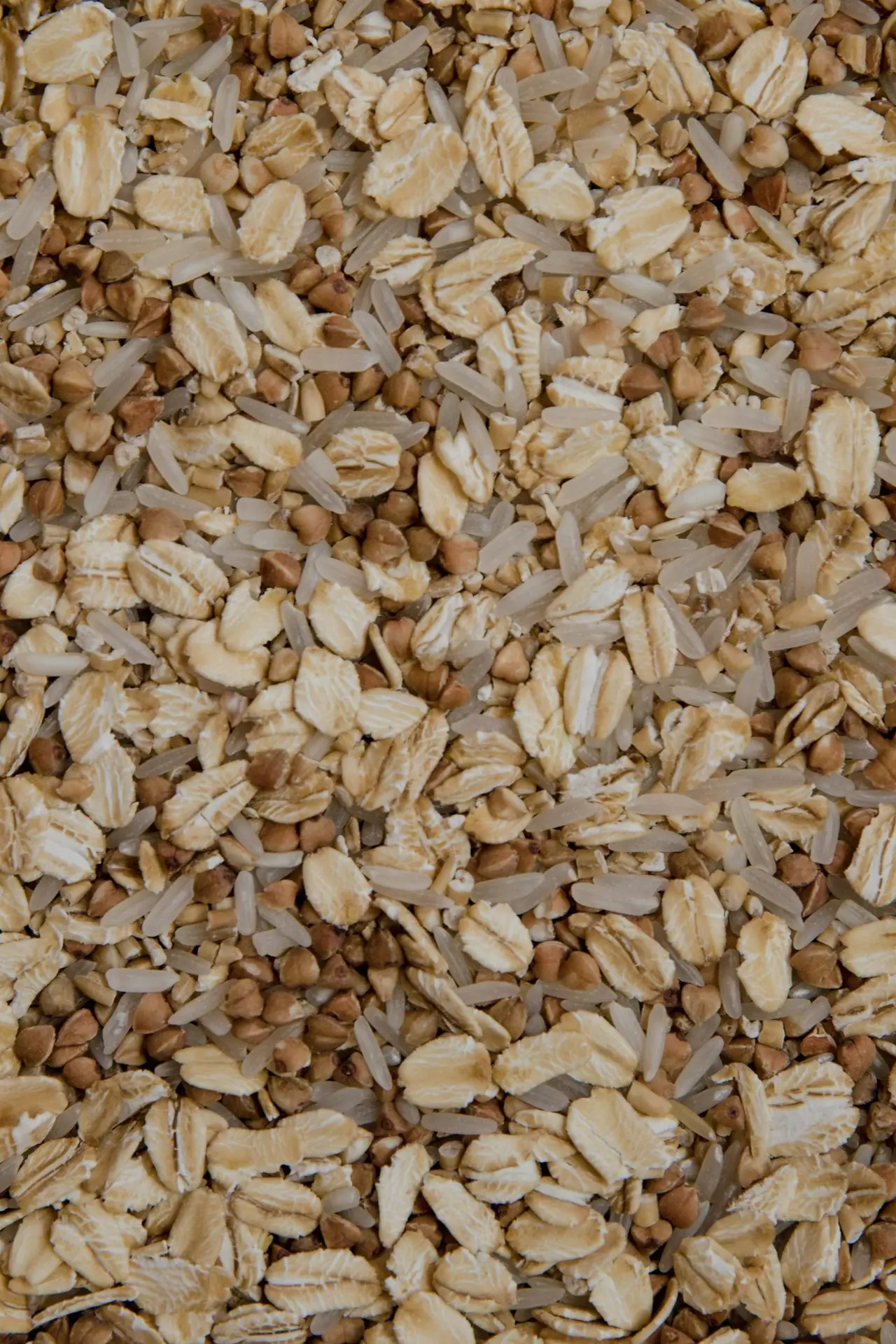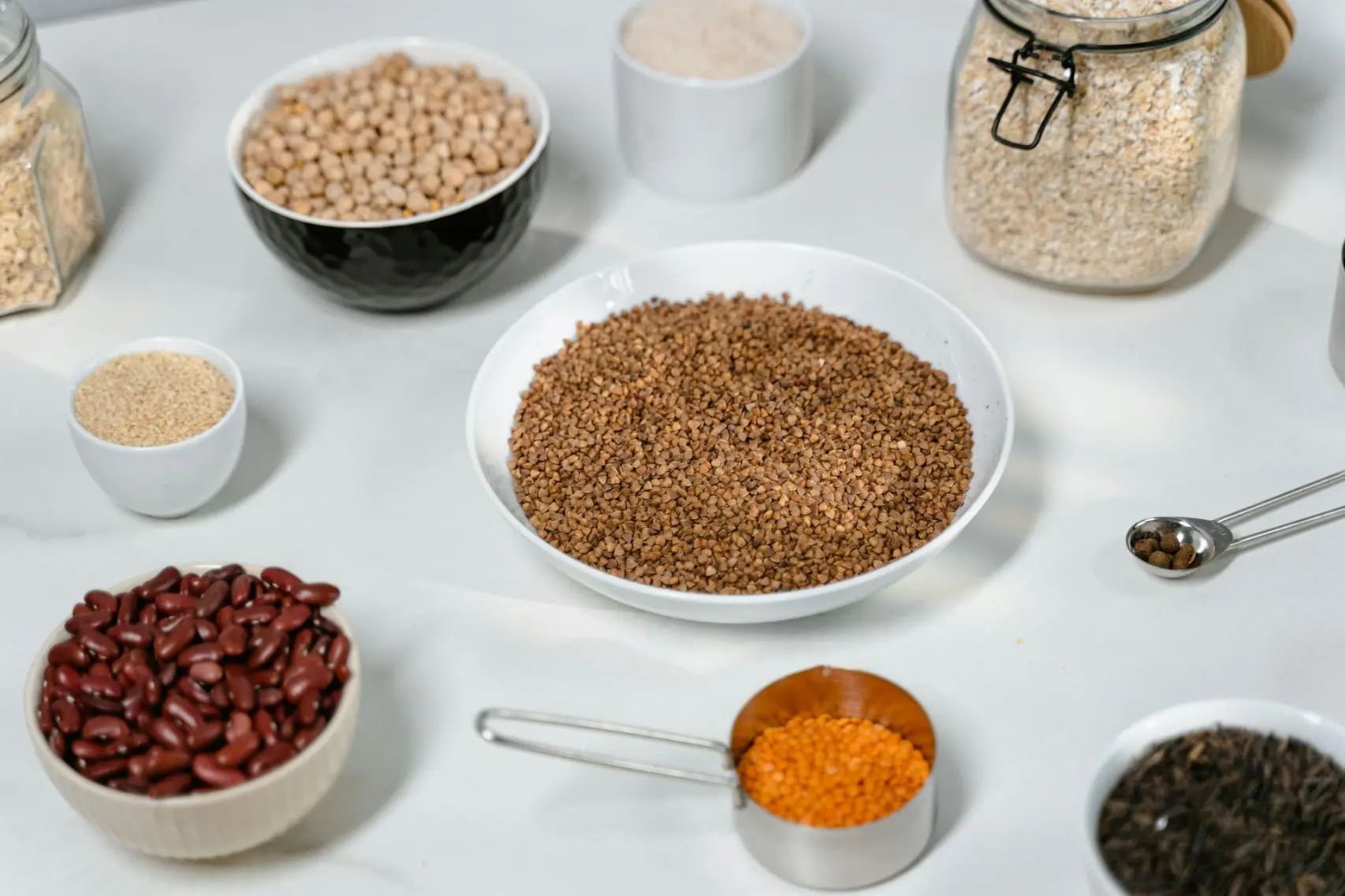Whole Grains: Nutrition, Benefits, and a Comparison with Refined Grains
Whole grains are seeds of cereal plants that retain all three edible components: the bran, germ, and endosperm. This means they provide more fiber, protein, and micronutrients compared to refined (non-whole) grains, in which the bran and germ are largely removed during processing.
Health Benefits of Whole Grains
High Fiber: Whole grains are rich in soluble and insoluble dietary fiber, aiding digestion, supporting gut health, and lowering risk of heart disease and diabetes.
Protein Content: Many whole grains contain moderate amounts of protein, supporting muscle repair and satiety.
Micronutrient Density: Whole grains supply magnesium, B-vitamins, iron, antioxidants, and other beneficial compounds often lost in refined processing.
Satiety and Weight Management: The combination of fiber and protein helps promote fullness and can assist with weight control.

Popular Whole Grains vs. Refined Grains: Nutrition Table
Below is a simplified table with one representative value for fiber, protein, and kcal per 100 g cooked grain.
| Grain | Type | Fiber (g) | Protein (g) | kcal |
|---|---|---|---|---|
| Oats | Whole | 2.5 | 4.2 | 85 |
| Quinoa | Whole | 3.0 | 4.8 | 130 |
| Brown Rice | Whole | 2.5 | 2.9 | 122 |
| Barley (hulled) | Whole | 3.8 | 4.0 | 129 |
| Millet | Whole | 1.3 | 4.3 | 123 |
| Buckwheat | Whole | 2.7 | 4.7 | 97 |
| Whole Wheat Pasta | Whole | 5.0 | 6.5 | 138 |
| White Rice | Refined | 0.4 | 2.6 | 137 |
| White Bread | Refined | 0.9 | 2.9 | 265 |
| Regular Pasta | Refined | 1.2 | 5.0 | 141 |
| Cornmeal | Refined | 0.3 | 3.0 | 78 |

Key Takeaways
Whole grains provide more fiber and protein for similar calorie counts compared to refined grains.
Even small differences in fiber content (e.g., brown rice vs. white rice) can significantly influence digestive health and satiety.
Consistently choosing whole grains over refined ones improves nutrient intake, supports healthy gut function, and promotes heart and metabolic health.

Start writing here...